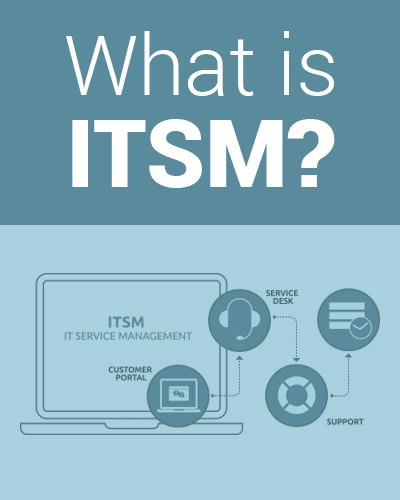IT service management involves five main aspects of IT, which includes:
- Employees and customers who use technology
- Applications, hardware, and other infrastructures
- Expenses and budget
- Efficient problem solving
- Helping a business meet its goals
Why is ITSM important?
IT service management software affects how organizations use technology to meet their business objectives. First, it helps optimize workflows and cut down costs by automating key functions or providing self-help capabilities.
For Managed Services Providers (MSPs) burdened by service requests, ITSM software can deliver solutions or respond to requests. Ticketing may be less difficult if you are using the correct ITSM framework that simplifies the process. By deploying the ITIL-recommended Single Point of Contact solution, MSPs can reduce labor costs.
Likewise, IT service management needs the incorporation of internal controls and tracking to enable higher-level monitoring. This heightened level of inspection makes it easier to determine where inefficiencies exist and how standardization and collaboration across teams can come in handy to save time, effort, and money. This level of transparency is a big benefit for enterprises.

Ultimately, as IT service management software streamlines services, it can ensure better accountability, reduce delays, and meet the IT needs of organizations.
Features of IT Service Management Software
Most ITSM software has the following features that come as standard across platforms:
Problem management tools: Diagnoses and troubleshoots issues before they could impair your network and cause downtime.
Ticketing: This helps track work requests, trends, and direct traffic.
IT service model readiness: These are existing IT service models that can be deployed right away.
Asset management: This manages your equipment from procurement to depreciation.
License management: This allows you to manage updates and receive notifications for renewals or expirations of licenses.
How to Choose an ITSM Tool
IT service management software is a critical tool in the daily operations of organizations. When looking to adopt an ITSM solution, remember the following tips to ensure that you will arrive at the right decision.
1. Define the scope
Determine the scope of your ITSM tool coverage. Do you need a platform that will log tickets? Do you want to have an automated capability for end-users – creating workflows, providing a knowledge base, and performing password resets? The list of requirements may vary from business to business. Do some research and talk with your employees regarding the features you need.
2. Set expectations
It’s also imperative to set expectations about the capabilities of the ITSM software you’re going to buy. You may think that any tool could be a good enough remedy for all the IT issues you are facing. Unfortunately, if you choose a subpar tool and it fails to address your problems, your reputation will suffer. That said, you need to be clear with what’s going to help you and what won’t.
3. Define your organization’s needs
After reaching a consensus regarding the scope of your ITSM, make sure to define some functional and non-functional requirements. This will essentially make up your buying criteria. You may rank your requirements in terms of their importance in the company, some could fall under mandatory and others will be optional.
Score potential tool providers based on the services they provide and weigh them against your requirements. That way, you can compare each ITSM software based on its merits.
4. Negotiate for the longer term
Each IT service management software will have a different commercial framework. This could be challenging for you to negotiate with a favorable cost for your company. See to it that you consider your growth plans, usage profile, and the roles that will be required for the users of the tool, as well as the total cost of ownership for the next five years. Have it documented as you need to refer to it when negotiating the most apt framework for the toolset.
Final Thoughts
During these times, organizations should always be ready to provide powerful support to their team. They must be able to promote automation, ease the complexity of managing multiple IT and non-IT assets, comply to audit requirements, and improve the performance of your IT service. To do all these, you need a reliable IT service management software like the one offered by ITarian.